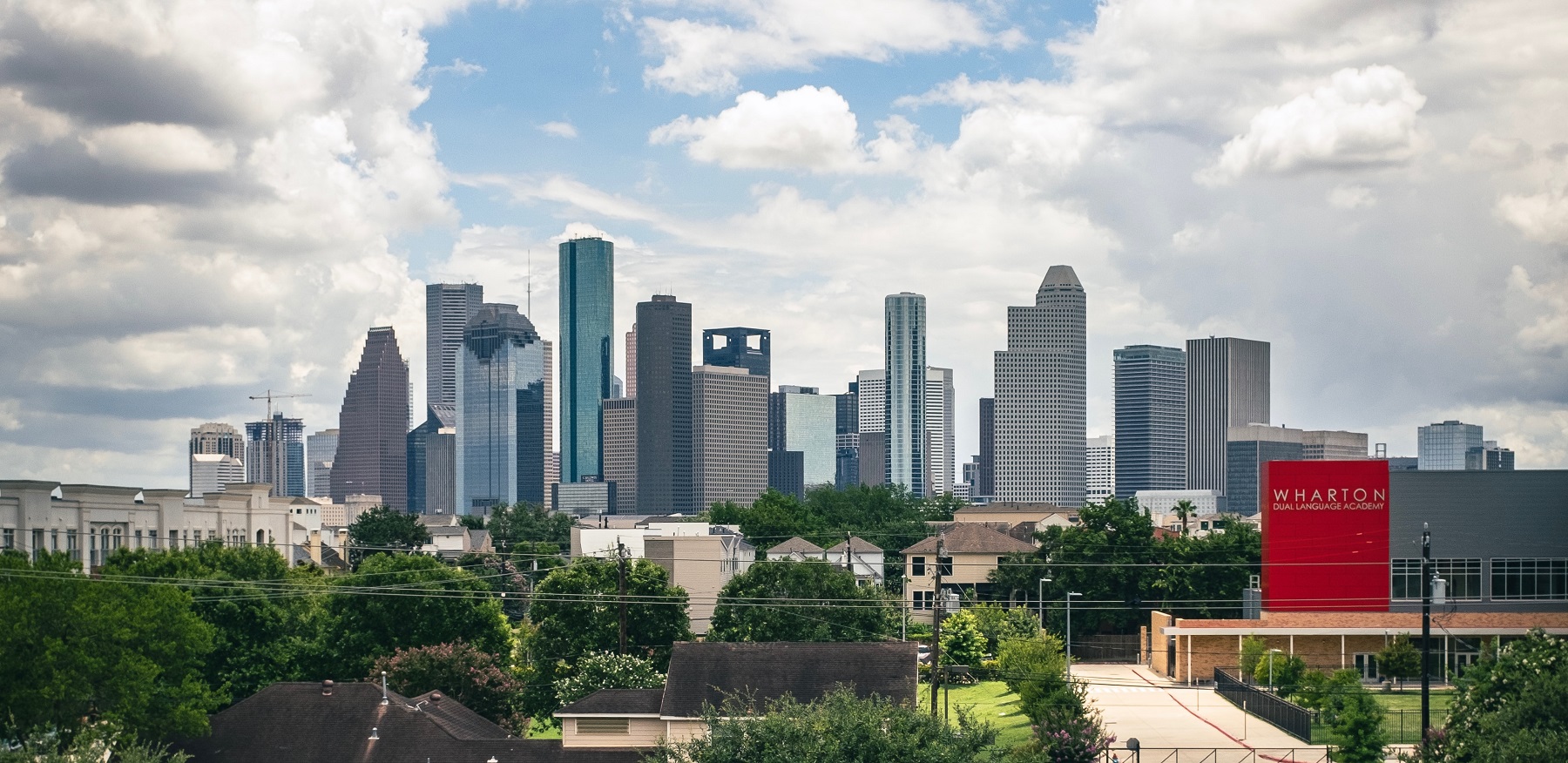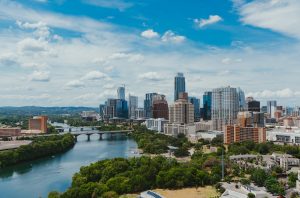Quick search
CTRL+K
Quick search
CTRL+K

Austin is the capital and one of the largest cities in the state of Texas. The city’s history began in the 1830s, when settlers began to settle along the Colorado River in present-day Austin. Texas became a republic in 1836 after a war of independence against Mexico, and three years later the Texan Congress wanted to find a new location for the state capital.
The site was found and called Waterloo, before being named after the Republic’s first Secretary of State, Stephen F. Austin. Edwin Waller was assigned to lay out a city plan, and he made a right-angled street pattern with Congress Avenue and the state Capitol as the central elements.
In 1841, Texas’ capital was moved again, before Austin again became the seat of government in 1845, and thereafter Austin grew rapidly as an administrative and educational center. In 1871, the Houston and Texas Central Railway opened, making Houston an important cattle and cotton trading town. In 1928, a new and expanded city plan was drawn up for Austin, which since then experienced high population growth.
Today you can take some lovely walks along the Colorado River and in downtown Austin, which still follows Edwin Waller’s urban development plan. Centrally on the riverbank is the city’s modern city hall, and south of the city hall you can walk along Austin’s many trails along and across the Colorado River. You can, for example, cross the river and go to Doug Sahm Hill, from where there is a fantastic view to all the skyscrapers in downtown.
This is also where you find the Long Center for the Performing Arts, which opened in 2008 as one of Austin’s major cultural venues. The Long Center is home to a variety of performances and the Austin Symphony Orchestra, Austin Lyric Opera and Ballet Austin. From the area in front of the Long Center, you can board a river cruise, which offers great views of downtown Houston and the many bridges spanning the river.
Heading north through downtown, you come to Austin’s business district and to other of the city’s well-known cultural institutions. You can walk along the main street, Congress Avenue, to see a mix og old ang new architecture. The Paramount Theatre is a great example, it opened in 1915 and has been the stage for vaudeville, theater and movies. It was here that the 1966 film Batman premiered. The neighboring building State Theater opened in 1935 in a different architecture, and opposite the theaters is The Contemporary, the city’s leading museum for contemporary art.
If you continue north, you arrive at Texas’ impressive government building, the Texas Capitol, which was built in 1882-1888. The Capitol is 92 meters high, and in the green area around the building you can see several memorials of various events. Southwest of the Texas Capitol is the Governor’s Mansion, which was built in 1854, and it has been the state’s governor’s residence since 1856.
The Bullock Texas State History Museum is an interesting museum in the northern part of the city, where the Texas story is told. You can see archaeological finds and learn more about culture, natural history, technology and other things that have shaped the state’s history and development. North of the museum is the large Austin campus of University of Texas. In the middle of the area stands the main building called The Tower, and with its 94 meters in height and a characteristic architecture, it is one of the city’s landmarks. You can visit the top of the tower, from where there is a beautiful view of the city.
To the east of the university campus, you can visit the Lyndon B. Johnson Presidential Library, which is one of the USA’s presidential libraries and museums, which depict a presidential period. Lyndon B. Johnson was president 1963-1969, and the library opened in 1971. One of the highlights is a replica of the Oval Office from the White House in Washington as it looked during Johnson’s presidency.

San Antonio is one of the largest cities in the US state of Texas. Founded by the Spanish in 1718 as a mission, the place formally became a city in 1731, making it one of the oldest cities in Texas. San Antonio developed into the largest city in the Spanish and later Mexican province of Tejas. Texas became an independent republic in 1836, but the United States’ annexation of Texas in 1845 and the resulting Mexican American War turned the tide, and after the war only 800 lived in San Antonio.
However, growth returned quickly in the United States, and approximately 15,000 people lived in the city in 1860. In 1877 the railroad came to San Antonio, connecting it to ports and large markets. At the beginning of the 20th century, many old buildings were demolished to make way for wider streets with increased traffic and trams. Since then, San Antonio has developed into a city of millions.

Houston is the largest city in the US state of Texas. The city was founded at the confluence of Buffalo Bayou and White Oak Bayou in 1836. The new city was named after Texas President and General Sam Houston, who led the Battle of San Jacinto in April 1836, the last and decisive battle in Texas’ revolution and secession from Mexico.
In August of that year, Augustus Chapman Allen and John Kirby Allen acquired a piece of land where they established Houston through advertising, and they had the nation’s capital located here. However, this was moved to Austin in 1839 as Houston grew. A port was soon established along Buffalo Bayou, and within a few decades Houston had become a railroad hub for the export of cotton.

Corpus Christi in Texas is a coastal city with a rich history starting when the city was founded in 1839 by Colonel Henry Lawrence Kinney. At that time, it was a small trading post known as Kinney’s Ranch, which served as a supply depot for a Mexican revolutionary army camped nearby. The name Corpus Christi means Body of Christ in Latin, and it was given to the area by Spanish explorer Alonso Álvarez de Pineda in 1519.
He discovered the bay on the Roman Catholic feast day of Corpus Christi. The city grew significantly after the arrival of U.S. troops under General Zachary Taylor in 1845, who set up camp in preparation for the Mexican-American War.
Read more about Corpus Christi

Dallas is a city in Texas, which is the second largest state in the United States, and for many it is the epitome of the West with cattle farms, rodeos and large cowboy hats. At the same time, Texas is a state with lots of technology companies, modern buildings, fine museums and many sights, and you experience that right away when you come to Dallas.
Dallas gave name to the TV series with the Ewing family, and it still draws tourists to Southfork Ranch, located on the outskirts of town. Dallas was also the place where John F. Kennedy was shot and killed in 1963 as he drove in an open car through the city streets and along Elm Street at Dealey Plaza. The place is one of the sights of the city today.

Fort Worth is one of the largest cities in Texas, and it is almost like twin cities with Dallas. That is why the Dallas-Fort Worth area is often referred to as one metropolitan area. Fort Worth was founded in 1849 as a military outpost on a bluff by the Trinity River. It happened in the aftermath of the American Mexican War, where seven forts were built 1848-1849 along the American western border to protect settlers in this part of the country.
The fort at Fort Worth was abandoned in 1853, but Fort Worth established itself as a thriving trading post for the large cattle trade that was in the region. The town became important for cattle drivers and later also for large cattle farms. At that time, Fort Worth was nicknamed Cowtown. The American Civil War and a harsh winter in 1873 caused a noticeable decline in Fort Worth, which, however, got back on the development track from 1876, and Cowtown was replaced by Panther City as a symbol of progress.
 Austin, Texas[/caption]
Austin, Texas[/caption]
Overview of Austin
Austin is the capital and one of the largest cities in the state of Texas. The city’s history began in the 1830s, when settlers began to settle along the Colorado River in present-day Austin. Texas became a republic in 1836 after a war of independence against Mexico, and three years later the Texan Congress wanted to find a new location for the state capital.
The site was found and called Waterloo, before being named after the Republic’s first Secretary of State, Stephen F. Austin. Edwin Waller was assigned to lay out a city plan, and he made a right-angled street pattern with Congress Avenue and the state Capitol as the central elements.
In 1841, Texas’ capital was moved again, before Austin again became the seat of government in 1845, and thereafter Austin grew rapidly as an administrative and educational center. In 1871, the Houston and Texas Central Railway opened, making Houston an important cattle and cotton trading town. In 1928, a new and expanded city plan was drawn up for Austin, which since then experienced high population growth.
Today you can take some lovely walks along the Colorado River and in downtown Austin, which still follows Edwin Waller’s urban development plan. Centrally on the riverbank is the city’s modern city hall, and south of the city hall you can walk along Austin’s many trails along and across the Colorado River. You can, for example, cross the river and go to Doug Sahm Hill, from where there is a fantastic view to all the skyscrapers in downtown.
About the Austin travel guide
Contents: Tours in the city + tours in the surrounding area
Published: Released soon
Author: Stig Albeck
Publisher: Vamados.com
Language: English
About the travel guide
The Austin travel guide gives you an overview of the sights and activities of the American city. Read about top sights and other sights, and get a tour guide with tour suggestions and detailed descriptions of all the city’s most important churches, monuments, mansions, museums, etc.
Austin is waiting for you, and at vamados.com you can also find cheap flights and great deals on hotels for your trip. You just select your travel dates and then you get flight and accommodation suggestions in and around the city.
Read more about Austin and the United States
United States Travel Guide: https://vamados.com/usa
City tourism: https://visitau-stin.com
Main Page: https://www.vamados.com/
Buy the travel guide
Click the “Add to Cart” button to purchase the travel guide. After that you will come to the payment, where you enter the purchase and payment information. Upon payment of the travel guide, you will immediately receive a receipt with a link to download your purchase. You can download the travel guide immediately or use the download link in the email later.
Use the travel guide
When you buy the travel guide to Austin you get the book online so you can have it on your phone, tablet or computer – and of course you can choose to print it. Use the maps and tour suggestions and you will have a good and content-rich journey.

Similar to Austin Travel Guide
